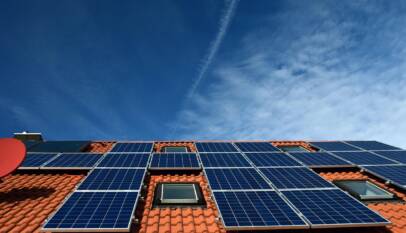
Solar glass panels integrate photovoltaic technology directly into glass surfaces, allowing windows to generate electricity while maintaining transparency. They convert ultraviolet and infrared light into electrical energy without blocking visible light, making them a practical solution for sustainable building design. This innovation enables buildings to harness solar power without sacrificing natural daylight or aesthetics.
The flexibility of solar glass panel means they can be customized for various types of buildings, from homes to skyscrapers. They offer an efficient way to turn structures into energy producers, contributing to reduced reliance on traditional power sources. As technology advances, solar glass panels increasingly include features like energy storage to boost efficiency and reliability.
Understanding Solar Glass Panels
Solar glass panels incorporate strong, transparent materials that protect solar cells while allowing sunlight to reach them efficiently. Their design and technology can vary, impacting factors like durability, energy output, and installation options.
What Are Solar Glass Panels?
Solar glass panels are components made primarily of tempered glass that cover photovoltaic cells. This glass protects the cells from weather, mechanical damage, and environmental wear while allowing sunlight to pass through with minimal loss.
They enable solar panels to function safely and efficiently in various settings, from rooftops to building-integrated installations. The glass’s durability contributes significantly to the panel’s lifespan, often lasting 25 years or more.
These panels can be tailored in thickness, transparency, and coatings to enhance performance or fit architectural needs.
How Solar Glass Panels Work
Solar glass panels transmit sunlight to photovoltaic cells beneath the surface. The glass must minimize reflectance and maximize light transmittance to improve energy conversion efficiency.
Its protective nature also prevents moisture and dirt from deteriorating the cells. Some advanced panels include coatings that filter harmful UV rays or reduce heat buildup, improving long-term performance.
When sunlight penetrates the glass, the photovoltaic cells convert it into electricity through the photovoltaic effect, supplying power for residential, commercial, or industrial use.
Types of Solar Glass Technology
There are mainly two types: glass-glass and glass-foil panels.
- Glass-Glass: Features glass layers on both front and back. This structure offers superior durability, better protection, and longer lifespan. It is often heavier and more expensive but favored for high-performance and longevity.
- Glass-Foil: Uses glass on the front and a polymer foil on the back. This design is lighter and less costly but generally less durable and has a shorter lifespan.
Innovations also include solar glass with integrated storage and semi-transparent panels for building integration, combining energy production with architectural elements.
Applications and Benefits
Solar glass panels serve multiple purposes across different building types, combining energy generation with architectural design. Their advantages include energy efficiency, durability, and integration versatility.
Residential Uses
Homeowners install solar glass panels primarily as windows or facades to generate electricity while maintaining transparency. This provides a dual function: natural lighting and power production, reducing dependency on the grid.
These panels help in lowering utility bills by converting sunlight into usable energy directly within the home. They are particularly useful for modern homes emphasizing sustainability and energy efficiency.
Some solar glass panels come in flexible forms to fit various window shapes or curved surfaces, expanding their application in unique residential designs without compromising aesthetics.
Commercial and Industrial Applications
In commercial buildings, solar glass panels are often integrated into curtain walls, skylights, and facades to produce clean energy on-site. This lowers operational costs and supports corporate sustainability goals.
Industrial facilities benefit from these panels due to their durability and high energy conversion rates, which help meet large-scale power demands. Their aesthetic qualities also contribute to modern, green building certifications.
These panels offer space efficiency by replacing traditional building materials, reducing the need for separate solar arrays. This integration is critical in urban environments where roof space is limited.
Advantages Over Traditional Solar Panels
Solar glass panels are encased in glass on both sides, enhancing durability and weather resistance compared to typical solar modules. This structure improves lifespan and reduces maintenance.
They offer higher efficiency by maximizing sunlight capture through transparent and spectral conversion properties. This often results in better energy output, especially in building-integrated photovoltaics.
Additionally, they preserve architectural design without blocking light or altering building appearance. This makes them preferable for projects requiring both energy and visual appeal.
| Feature | Solar Glass Panels | Traditional Solar Panels |
| Transparency | High (can be transparent) | Low (typically opaque) |
| Durability | Enhanced glass-glass design | Standard encapsulation |
| Integration | Building-integrated | Roof or ground-mounted only |
| Aesthetic Impact | Minimal visual disruption | Often bulky or visually intrusive |
| Energy Efficiency | High with innovative tech | Variable, usually lower in facades |
British Virgin Islands Company Registration Guide for Seamless Offshore Setup
Registering a company in the British Virgin Islands (BVI) is a straightforward process tha…









